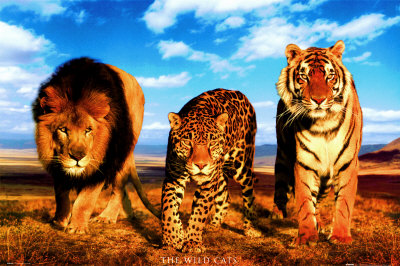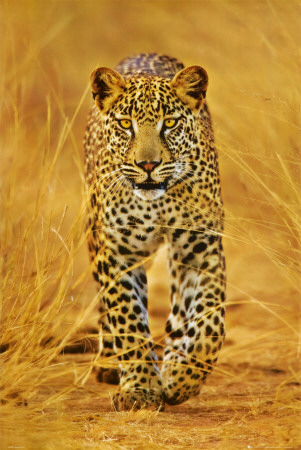The hidden secrets of the Indian Jungle never cease to intrigue. The big cats, tigers, and leopards are majestic creatures that inhabit the jungle of Kanha. These magnificent predators are more than a hunting machine with a mass of exquisite musculature. As tertiary carnivores, they are an indispensable part of the ecosystem that has for centuries nurtured our souls and bodies.
The animals prowl in the deep confines of the forests and rule over their domain exhibiting brute strength and sagacity that is a must for survival in harsh conditions of nature. The tigers and leopards are the most charismatic animals on earth. For just one glimpse people travel thousands of miles to satiate their curiosity and put myths and intrigue to rest. For sighting of these majestic animals in the wild people bear hours of patience, tire their bones, and enliven moments of extreme pleasure when the sightings fall true.
The tiger migrated from the snow-covered regions of Central Asia into India about ten thousand years ago. It could not step into Sri Lanka due to the distance created by the tectonic plates by then.
In recent times, the tiger survives in a precarious state with a population of less than three thousand in the country. Kanha National Park is one of the finest reserves in the State of Madhya Pradesh. It is home to these big cats. It is a conservation unit under the aegis of the Project Tiger Program in India.




 to enslave India joined in the fray. Wild animals were shot mercilessly in large numbers with the use of firearms. The forests were brought under the ax of civilization and loot.
to enslave India joined in the fray. Wild animals were shot mercilessly in large numbers with the use of firearms. The forests were brought under the ax of civilization and loot.
 Some of the names I remember are Konda, Choti Mada, Badi Mada, Lal Aaankh, Munna and Kankata. Tigers are secretive animals and many complete their life cycle in anonymity. They are hardly ever seen or heard in the deep confines of Kanha forests.
Some of the names I remember are Konda, Choti Mada, Badi Mada, Lal Aaankh, Munna and Kankata. Tigers are secretive animals and many complete their life cycle in anonymity. They are hardly ever seen or heard in the deep confines of Kanha forests. 

 machine and apt to the task it has been created for. But unlike humans, it kills only for food. Sometimes territorial fights are fatal resulting in the death of the opponent.
machine and apt to the task it has been created for. But unlike humans, it kills only for food. Sometimes territorial fights are fatal resulting in the death of the opponent. . The musculature is designed in a manner to accord force at the right juncture.
. The musculature is designed in a manner to accord force at the right juncture.
 The National Park is accessible from the Raipur Capital of Chhattisgarh, Gondia in Maharashtra, and Jabalpur. The drive from Jabalpur in Madhya Pradesh is about one hundred sixty-five km via Mandla. This is the preferred route along with the drive from Nagpur. Most of the hotels are situated at Khatia and Mukki Gates.
The National Park is accessible from the Raipur Capital of Chhattisgarh, Gondia in Maharashtra, and Jabalpur. The drive from Jabalpur in Madhya Pradesh is about one hundred sixty-five km via Mandla. This is the preferred route along with the drive from Nagpur. Most of the hotels are situated at Khatia and Mukki Gates. 





 Full Day Safari in Bandhavgarhon 08/29/2023
Full Day Safari in Bandhavgarhon 08/29/2023
 SEO Campaign: Website Overhaulon 02/13/2023
SEO Campaign: Website Overhaulon 02/13/2023
 Indian Food It Is Not All Curryon 02/08/2023
Indian Food It Is Not All Curryon 02/08/2023
 How Tiger Tourism is Organized in India?on 02/07/2023
How Tiger Tourism is Organized in India?on 02/07/2023



Comments
It is all green over here in June due to monsoon. The torrential rains turn everything green here. Beautiful cubs and fawns are born in this season but no blue eyes. Butterflies frolic in the jungle painted in multiple colors. It is a fascinating spectacle.
pateluday, Thank you for all the practical information, pretty pictures and product lines.
Are forests and woodlands known for blue animals and plants in India?
Chicory and spring azure butterflies give blue colors to June here. So blue-eyed newborn kittens move around without standing out.
Would that be the case for blue-eyed young, such as the two little big cats in the second-to-last photo, in Indian forests and woodlands? Would there be blue-colored fauna and flora with whom and which they blend?
Otherwise, I would worry that they stand out until melanin pigments develop and their eyes change color, within about six weeks if they're like kittens here.
Imagination
Nice images. How did they get the lion, leopard, and tiger to walk together in the poster?
Welcome csimion70 thanks for the comment.